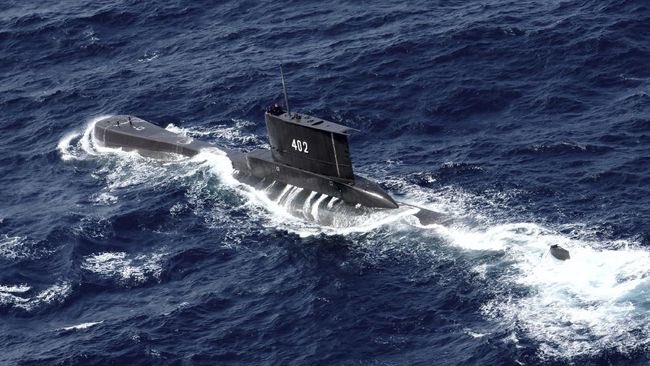Indonesia — known for its strategic location close to world shipping lanes — is now mounting a riposte to China's growing assertiveness in the Indo-Pacific, by deciding to triple the size of its submarine fleet.
From a modest four, Indonesia intends to build a fleet of 12 submarines, Nikkei Asia reported. The decision to rapidly expand its underwater platforms follows three major developments. First, Indonesia lost one of its submarines in March, triggering an internal debate on the future of the arm, resulting in a decision to expand the fleet.
Second, Indonesia has decided to counter Chinese forays in the Natuna Islands in the South China Sea. China is disputing Indonesia’s claims on these islands.
Third, Jakarta is aware of the subtext — that an opportunity exists of joining an emerging maritime coalition of the Indo-Pacific Quad, comprising India, Australia, Japan and the United States, which can collectively deter China.
A Middle Power, Indonesia, by reasons of geography, is a natural maritime player. It is the natural guardian of four major world shipping lanes.
Analysts say that the Indonesian archipelago hosts at least four major choke points, which can be leveraged to counter Beijing, as some of them are critical for China's seaborne trade.
Foremost among these channels is the Malacca strait — the crucial and shortest trade link between the Indian and Pacific Oceans. This strait is a narrow, 890 km stretch of water between the Malay Peninsula and the Indonesian island of Sumatra. The vast majority of China's oil imports, from the Gulf, Venezuela and Angola, passes through this route, which is also the lifeline for Japan and South Korea — the other major industrial economies of the region.
Indonesia also hosts the Sunda Strait — the channel between the islands of Sumatra and Java. It is an important waterway for ships travelling along the Cape route in Africa to East Asia. Australian vessels setting course to destination in Southeast or East Asia, also make active use of this passage.
The third channel, the Lombok Strait, also a part of the Indonesian archipelago, is deep and wide. It is therefore ideal for transiting huge oil tankers and other monster ships with 100,000 dead weight tonnage or more.
The Ombai-Wetar Straits, also in Indonesia, play a unique military role. Because they are extremely deep, they provide undetected passage for submarines traveling between the Pacific and Indian Ocean. Consequently, there is considerable interest in these straits among the strategic communities of the Indo-Pacific countries, who are wary of the transit of Chinese submarines from the Pacific to the Indian Ocean.
ALSO READ:
Indo-Pacific Quad could launch grand project to rival China’s Belt and Road Initiative (BRI)
Eye on China, Japan probes Vietnam and Indonesia as new Indo-Pacific partners
Indonesia’s pivot in the contest between China and the Indo-Pacific Quad would therefore be crucial in determining the regional balance of power.
Jakarta's decision comes nearly a month after the Indonesian submarine KRI Nanggala-402 disappeared while conducting training operations in the Bali Sea. Later it was announced that the sub has been found, broken into three parts at the bottom of the sea with the 53-member crew falling in line of duty.
"The incident fuelled a sense of urgency in the country about the state of its submarine fleet. China's 'nine-dash' line intersects a portion of Indonesia's EEZ around the Natuna Islands. Chinese fishing boats operate there, and Beijing has also deployed its coast guard ships, which in February it authorized to use firepower. Jakarta is bracing for a possible increase in activity in the area," reported NikKei.
ALSO READ:
Indonesia finds missing submarine, all 53 crew members dead




















